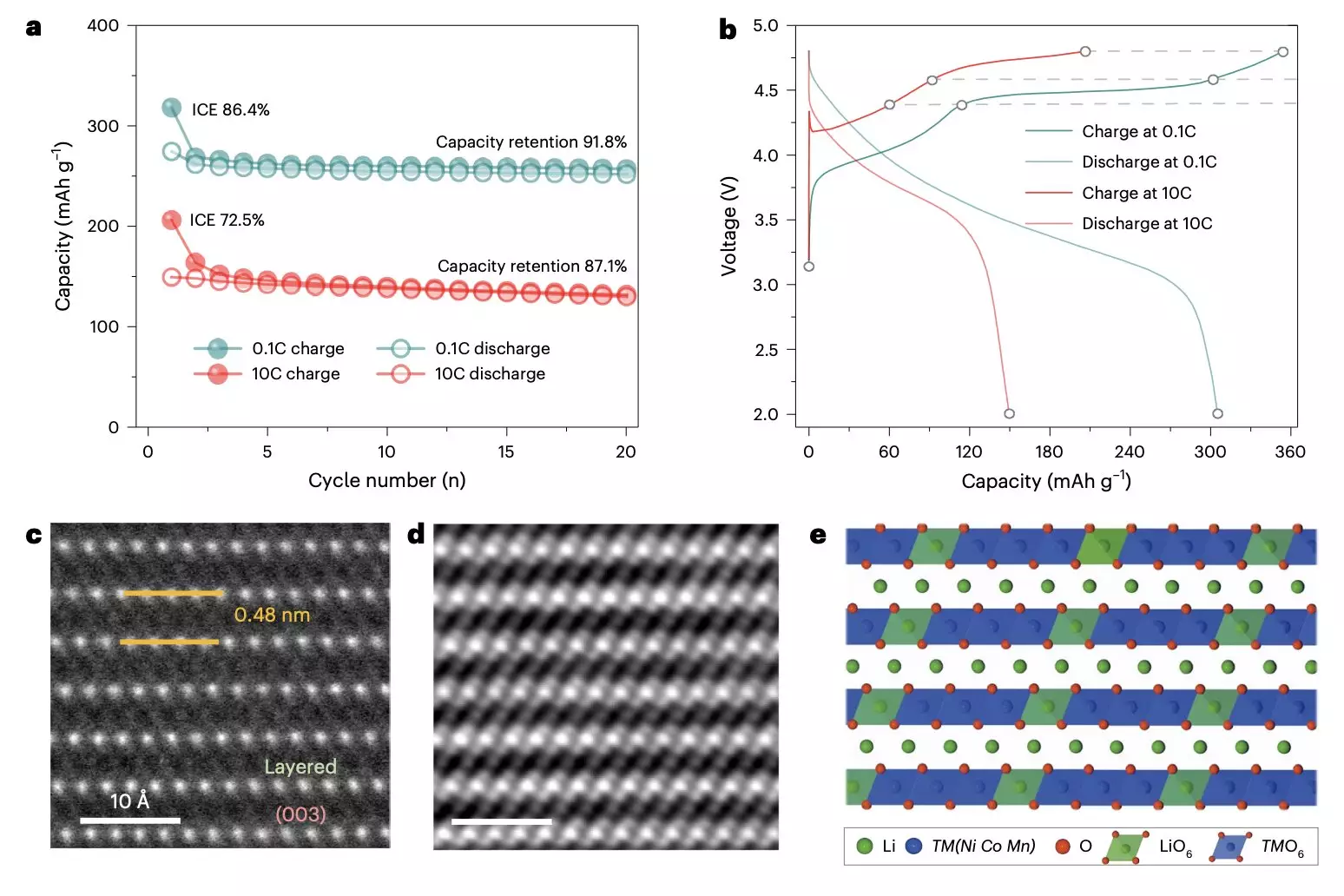As the demand for more efficient energy storage systems grows, the race to innovate battery technology has intensified. Researchers globally are engaged in a pivotal mission: to develop batteries that not only hold greater energy reserves but can also recharge in shorter intervals, discharge energy more steadily, and exhibit prolonged operational lifetimes. Among the various components that impact battery performance, the cathode—the negative electrode—is of paramount importance. Recent studies have placed emphasis on layered lithium-rich transition metal oxides, which show significant promise as next-generation cathode materials.
The appeal of layered lithium-rich transition metal oxides lies in their unique structural composition. This layered architecture facilitates the migration of lithium ions during the charge and discharge cycles, thus enabling higher energy storage capabilities. Furthermore, the inclusion of transition metals such as manganese, cobalt, and nickel enhances the inherent ability of these cathodes to partake in redox reactions. These reactions are crucial, as they allow the flow of electrons that ultimately powers devices ranging from electric vehicles to smartphones.
However, despite the theoretical advantages, practical applications have been hindered by significant challenges. Specifically, many of these cathodes exhibit rapid performance decline, showing voltage loss and instability over time. This degradation has prevented their widespread adoption in commercial battery systems.
In a bid to identify the underlying causes of this degradation, a collaborative research group comprising scientists from Sichuan University and Southern University of Science and Technology, among others, undertook an in-depth investigation. Their findings, published in the renowned journal Nature Nanotechnology, outline intricate mechanisms responsible for the reduced lifecycle of batteries utilizing these lithium-rich oxide cathodes.
The researchers employed advanced imaging techniques, primarily energy-resolved transmission X-ray microscopy (TXM), to observe the cathode materials at nanoscopic resolutions. This allowed them to delve into the structural and chemical changes occurring within the materials throughout the battery’s operation. Their analysis revealed that various oxygen defects, which proliferated during initial charge cycles, were critical contributors to the degradation process.
Defect Dynamics and Structural Changes
The study highlighted several critical pathways through which degradation occurs. It was found that oxygen defects, formed during slow electrochemical activation, lead to progressive phase transformations within the material. These transformations resulted in the creation of nanovoids—tiny voids that could compromise the integrity of the cathode material. Additionally, the research identified that ultrafast lithium intercalation could exacerbate structural distortions, triggering further deterioration of the cathode through processes such as the dissolution of transition metal ions and the alteration of lithium ion sites.
The ramifications of these discoveries are profound. Researchers articulated that such inhomogeneous and irreversible structural changes result in notably reduced initial Coulombic efficiency, alongside ongoing issues such as particle cracking and expansion over subsequent charge-discharge cycles.
Implications for Future Battery Development
The insights derived from this comprehensive study are poised to inform future innovations within the realm of battery technology. With a clearer understanding of the degradation mechanisms at play in layered lithium-rich metal oxide cathodes, researchers can now strategize on how to mitigate these issues. Possible solutions may involve redesigning cathode structures, optimizing the composition of materials, and developing better manufacturing processes that enhance durability.
As we stand on the cusp of a battery revolution, breakthroughs in material science and engineering will be critical to supporting electric vehicles and portable devices, ultimately leading toward more sustainable energy solutions. The foundation laid by these researchers signals a promising direction for the future of battery technology, paving the way for enhancements that could redefine energy storage capabilities in the years to come.

